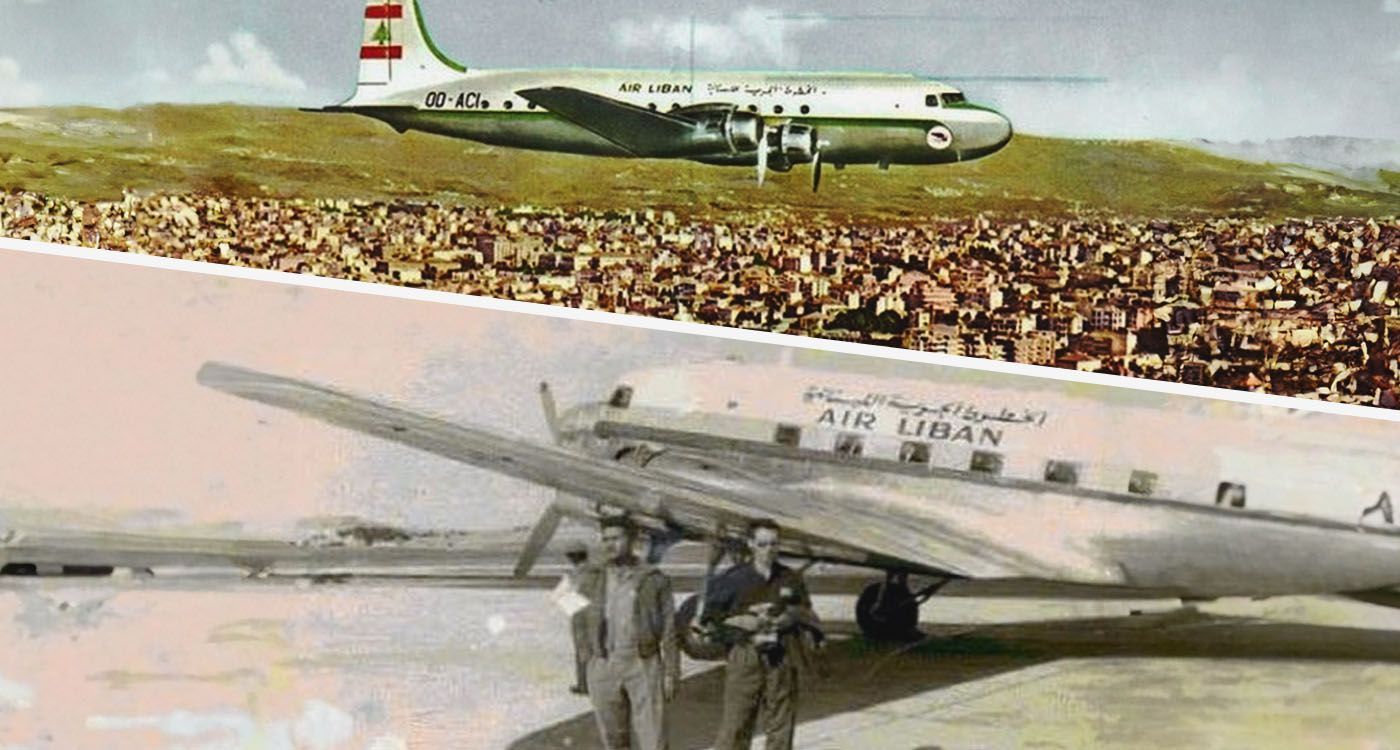- Home
- Highlights
- 1957: A Crash, Gold and Shadows of Mystery

©This is Beirut
About four kilometers off the coast of Beirut and 40 meters below the surface lies a mystery long forgotten by the public, yet still etched in the memory of a few veteran divers and seasoned seafarers. A story of a vanished plane, a cargo of gold and a string of suspicious events dating back to 1957.
This is the story of the Curtiss C-46 operated by Air Liban, which crashed off the coast of Beirut in 1957 with around 30 passengers on board. According to witness accounts and expert testimony, the aircraft was transporting a shipment of gold estimated between 400 and 450 kilograms, bound for Kuwait. While the crash itself raises questions, what happened afterward is just as puzzling.
According to a former rescue diver trained in thermal imaging detection, interviewed by This is Beirut, a plane – the Boeing 737-8AS registered ET-ANB – may have been deliberately brought down into the sea on January 25, 2010. This was the infamous crash of Ethiopian Airlines Flight 409, which had taken off that day from Beirut International Airport bound for Addis Ababa. According to the diver, the maneuver allegedly served as a cover to deploy a search vessel and scan the seabed to locate the valuable metal lost in 1957. He recalls, “Jet fuel leaves a thermal mark visible on the water’s surface. We tracked it, along with the Lebanese Army, using a helicopter and sensors, until we were able to pinpoint the wreck.”
According to the same source, the mission was presented as a standard recovery operation, but was in fact intended to exploit far more valuable submerged resources. He also referred to a supposed agreement with a former prime minister who allowed the staggering cost of the operation to be billed to the state. “The smaller research vessel alone cost $100,000 per day, while the larger one, equipped with a full lab, ran over half a million dollars per day,” the source claimed.
What became of the gold remains a mystery. The Curtiss C-46 did go down, but its cargo was never retrieved nor even officially acknowledged. One thing is certain: somewhere, beneath the sand or in shallow waters, a treasure lies buried, lost to time, silenced by decades of secrecy and official neglect.
The Victoria Mystery: A Wreck Standing in the Deep
Among the very overlooked treasures of underwater heritage is the HMS Victoria, a British warship that sank off the coast of Tripoli in the late 19th century. Once a pride of the Royal Navy, the Victoria went down in 1893 after a tragic navigational error, claiming the lives of more than 350 men.
What sets this wreck apart is its extraordinary position: standing upright on the seafloor, its bow buried deep in the sand. It is believed to be the only known wreck of its kind in the world. Discovered between 2010 and 2012 by Christian Francis, following tips from local fishermen, the Victoria nonetheless remained off official radar for decades.
Resting at a depth of 120 meters, the wreck is difficult to detect by sonar. Following its discovery and the attempts to dynamite it in the hopes of finding treasure or valuable artifacts, the Lebanese authorities restricted all access to the site, placing the location under constant military surveillance. Diving remains prohibited, but meaningful protection is minimal.
In recent years, some are pushing to turn the site into a managed diving destination, or even an underwater museum. It would be a technical challenge since divers could only stay underwater for 10 to 15 minutes during technical dives, but it could become a significant tourism asset if backed by political will.
Some discoveries leave a lasting mark, and the Victoria was one that deeply impacted Sean Kingsley. “I was stunned. The wreck lay upright, planted deep in the depths. I had never seen a ship so well preserved,” said the director of Wreck Watch and the Center for East-West Maritime Exploration.
He asked, “Why has the United Kingdom never sent a team to document and preserve this extraordinary part of its naval history?” This question clearly needs to be directed to the British Ministry of Defense: what do they know about the site’s current state? Have they coordinated at all with Lebanese authorities to ensure its protection? And how are they addressing the risk of looting?
The lack of a clear strategy, planning, or even a formal claim raises troubling questions: how can such a monument of naval history be left to decay in silence? Why the inaction, especially when the wreck remains a symbolic possession of the UK?
The Victoria is more than just a sunken warship. It stands as a silent testament to a human tragedy, a relic of a bygone era and a masterpiece of naval engineering. Yet it lies forgotten, at the mercy of the sea and human indifference. This submerged historical treasure’s fate still hangs in the balance, awaiting decisions long overdue.
Lebanon’s underwater heritage is undeniably rich, yet uncovering these treasures is no easy task, given the extreme complexity and high costs of exploration and excavation.
To be continued...


Comments